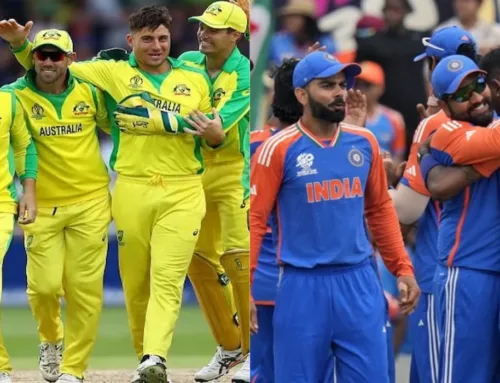Matches between Sri Lanka Women and New Zealand Women have always held a certain intrigue — not just for the on-field contest, but for the contrast in cricketing cultures, histories, and resources that each side brings. In 2025, as they meet again in the Women’s ODI World Cup, the matchup is a fascinating one to examine.
In this blog, I’ll explore:
-
Historical and head-to-head context
-
Strengths & challenges of both teams
-
Recent form and 2025 World Cup spotlight
-
What to watch for in their encounters
-
Broader reflections (women’s cricket growth, equity, etc.)
1. Historical & Head-to-Head Context
A. Head-to-Head in ODIs
-
Sri Lanka Women and New Zealand Women have faced each other 16 times in Women’s ODIs. ESPN Cricinfo+3OneCricket+3ESPN Cricinfo+3
-
Out of those 16:
• New Zealand has won 13 matches. myKhel+4OneCricket+4ESPN Cricinfo+4
• Sri Lanka has won 2. OneCricket+2ESPN Cricinfo+2
• 1 match ended with no result (washed out). ESPN Cricinfo+3icc+3OneCricket+3
That record shows a clear dominance by New Zealand historically. Cricket World+4ESPN Cricinfo+4OneCricket+4
B. Broader Historical Performance
-
While Sri Lanka have had periods of promise, their resources, infrastructure, and international exposure typically lag behind more established teams.
-
New Zealand, on the other hand, has a more consistent track record in women’s cricket and more established structures for development.
-
In recent years, Sri Lanka have shown flashes of competitiveness, especially in home conditions, but sustaining consistency is often a challenge.
2. Strengths & Challenges of Each Side
Sri Lanka Women
Strengths:
-
Spin bowling / subcontinental conditions — Sri Lankan spinners tend to be more effective on turning pitches, which gives them an advantage, especially at home.
-
Explosive batters / fight in middle-order — They have batters who can switch gears and make things happen (e.g. Nilakshika de Silva’s recent half-century in the 2025 World Cup match). GenZ Cricket+4ESPN Cricinfo+4icc+4
-
Home advantage — familiarity with conditions, crowd support.
Challenges:
-
Inconsistent top order / collapses — The top order sometimes fails, putting pressure on middle/lower order.
-
Depth & resources — Fewer depth options in bench strength, less exposure to high-level competitive matches consistently.
-
Adapting to varied conditions abroad — On pitches in New Zealand, Australia, or elsewhere, where pace, bounce, or seam dominate, Sri Lanka can struggle.
New Zealand Women
Strengths:
-
Balanced team / all-round capabilities — They often have batting depth plus reliable bowlers in pace and spin.
-
Experience & exposure — More regular tours, international fixtures, stronger domestic structures.
-
Consistent performance in foreign conditions — Ability to adapt to pitches with bounce, swing, and fast bowling.
-
Match temperament and closing games — Known to do well in crunch situations.
Challenges:
-
Vulnerability on turning tracks — On slow, low, turning pitches, spin attacks (like Sri Lanka’s) can be more challenging to counter.
-
Pressure when favorites — At times, expectations weigh heavily; may underperform when the opposition is underestimated.
-
Injuries / fatigue — Given international schedules, managing workloads is key.
3. Recent Form & 2025 World Cup Spotlight
The 2025 Encounter
In their 15th match of the ICC Women’s World Cup 2025:
-
Sri Lanka won the toss and elected to bat. FanCode+2Cricbuzz+2
-
They posted 258/6 in their 50 overs, thanks to Nilakshika de Silva’s fifty and Chamari Athapaththu’s half-century. Cricbuzz+4ESPN Cricinfo+4icc+4
-
Nilakshika’s fifty was the fastest of the tournament up to that point. ESPN Cricinfo+1
-
Unfortunately, persistent rain prevented New Zealand from beginning their chase, and the match was abandoned — a no result. NDTV Sports+3icc+3ESPN Cricinfo+3
-
As a result, the points were shared. Cricket World+3NDTV Sports+3icc+3
Thus, while Sri Lanka showed fight and promise in setting a competitive total, they were denied a result by external factors.
Recent Tours & Matches
-
On Sri Lanka’s tour of New Zealand in 2025, matches were played (including ODIs) with New Zealand generally holding the upper hand. ESPN Cricinfo+3ESPN.com+3ESPN Cricinfo+3
-
In limited-overs matches, especially T20Is, Sri Lanka have pulled off surprises now and then, leveraging spin and pitch awareness. AiScore+2ESPN Cricinfo+2
4. What to Watch in Their Encounters
When Sri Lanka Women and New Zealand Women play, these are the key matchups and factors I’d keep an eye on:
-
Top-order starts by Sri Lanka — If their openers or #3 can give a solid foundation, it eases pressure.
-
Spin battle vs batting against spin — How New Zealand’s batters tackle Sri Lankan spinners (especially in Sri Lankan pitches).
-
Use of pace & seam by New Zealand — Can their quicker bowlers exploit any movement early on?
-
Middle-over phases — Transitions from 15–35 overs often define match momentum.
-
Lower-order finishing — Both teams rely on lower-order contributions; who handles pressure better?
-
Weather & pitch conditions — As seen in 2025, rain or interruptions can change outcomes.
-
Psychological edge & confidence — Given New Zealand’s dominant historical record, Sri Lanka often enter with more onus to prove.
5. Broader Reflections
-
The rivalry, while not as storied or frequent as some, is a microcosm of global women’s cricket — where emerging teams challenge established powerhouses.
-
Sri Lanka’s performances, especially recent ones, reflect how investment, infrastructure, and exposure matter. Even on days when they lose, competitiveness and fight matter a lot.
-
For fans, these matches are opportunities to see contrasting styles (spin vs pace, subcontinent vs island cricket culture).
-
From a development standpoint, continuing to provide platforms (bilateral series, women’s leagues, domestic structures) will help Sri Lanka close the gap.
-
Matches like the 2025 World Cup encounter — where they almost posted a strong total — show that with consistency, Sri Lanka can increasingly trouble stronger teams.






Leave A Comment